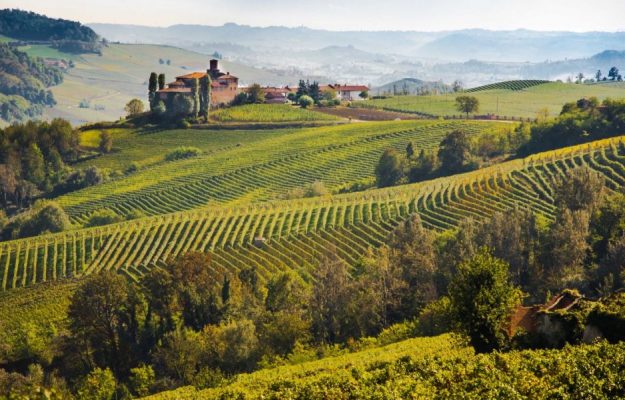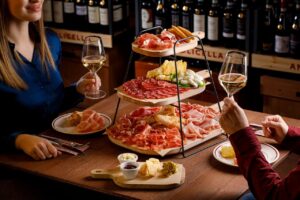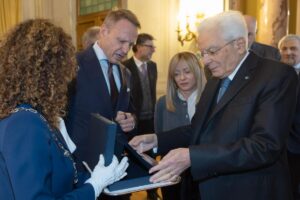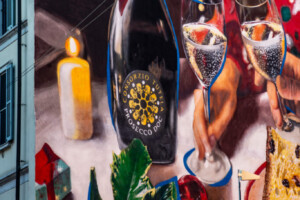Mapping the territory is now a necessary step for both large and small Italian wine denominations. It will better describe and enhance the specifics of individual productions, which are linked to vines and territorial characteristics that have become more and more identifiable and distinctive. The research requires studying sub-areas, identifying different crus, as well as considering tradition, geography, geology, and agronomy, as a consolidated practice. The study often stems from the intuition of the companies, while at other times the Consortiums do the research, like the MGAs (Additional Geographical Mentions) of Barolo and Barbaresco, as well as Chianti Classico, and also the “Contrade” in Etna, the Pievi in Nobile di Montepulciano, the UGA in Soave and the paths Alto Adige and Franciacorta have taken. The latest addition is the Colline del Monferrato Casalese Wine Protection Consortium, which created the map “Zone and Vigneti del Monferrato Casalese”, with Alessandro Masnaghetti, scientific popularizer, cartographer, mapper and editorial curator. The map shows the portion of Casalese Monferrato that lies within the boundaries of the DOC Grignolino del Monferrato Casalese, as defined by Production Regulations. The vineyards currently existent are then highlighted, but do not distinguish the different vines and the different DOC and DOCG cultivated. The map has reproduced, on a scale of 1: 52,000, the areas and vineyards of 33 municipalities in the Casalese Monferrato area, as follows: Alfiano Natta, Altavilla Monferrato, Camagna Monferrato, Camino, Casale Monferrato, Castelletto Merli, Cella Monte, Cereseto, Cerrina Monferrato, Conzano, Gabiano, Frassinello Monferrato, Lu and Cuccaro Monferrato, Mombello Monferrato, Moncestino, Murisengo, Odalengo Grande, Odalengo Piccolo, Olivola, Ottiglio, Ozzano Monferrato, Pontestura, Ponzano Monferrato, Rosignano Monferrato, Sala Monferrato, San Giorgio Monferrato, Serralunga di Crea, Solonghello, Terruggia, Treville, Vignale Monferrato, Villadeati and Villamiroglio. Furthermore, the map includes a geological summary edited by the geologist and sedimentologist, Alfredo Frixa. The entire area is divided into 7 Sectors - 5 on the West (“Valcerrina”, “from Serralunga di Crea to Odalengo Piccolo”, “from Murisengo to Alfiano Natta”, “Gabiano / Rubino di Cantavenna” and “San Giorgio Monferrato / Casale Monferrato”) and two on the East (“Valle Ghenza” and “Vignale Monferrato / Valle Grana”). “The mapped vineyards were grouped following both local tradition and the criteria of landscape uniformity, to identify more specific production areas present on the territory”, explained the curator, Masnaghetti. “Each one of these areas has been assigned a name that once again comes from local tradition, rather than from its location”.
The work of mapping is an attempt to shift everyone’s attention (enthusiasts, critics and producers) from the detail of individual bottles to the context in which the bottles themselves are created. In other words, to our hills, our vineyards, our woods and our geographical location. Today, more than ever, the time has come to change perspective, and understand that a denomination is only successful if it is the expression of a community and shared knowledge. No wine and no company can be an island anymore”.
“This project has given the Consortium a qualified business card that can be used Internationally, regarding both the wine world as well as essentially promoting the reference territory”, Claudio Coppo, president of the Consortium, added. “As producers, we needed a Wine Charter reference, which more and more professionals are requesting, and it has become essential for our work. It was possible to join forces and intentions through the Consortium to reach more qualified and qualifying goals, and it will potentially also have a positive effect in the promotion field towards the tourism sector”, Ermanno Accornero, vigneron and first promoter of the project, concluded.
Copyright © 2000/2025
Contatti: info@winenews.it
Seguici anche su Twitter: @WineNewsIt
Seguici anche su Facebook: @winenewsit
Questo articolo è tratto dall'archivio di WineNews - Tutti i diritti riservati - Copyright © 2000/2025









































































































































































































